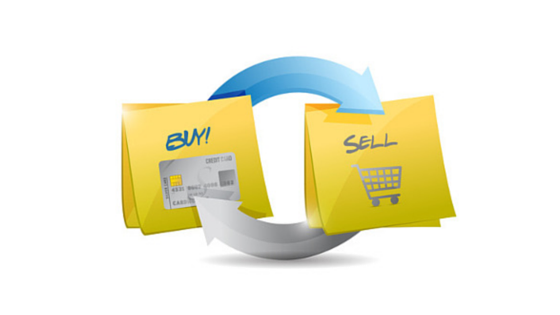If I was to ask you think about marketing and what you did to bring in new clients, I bet you could start reeling off a list of tools and tactics.
Facebook, networking events, ebooks, exhibitions, LinkedIn, advertising in your local parish mag … a big long list of all the ways that you think you could be getting in front of your potential clients.
When most people think about marketing, it’s almost always the place they start. At the top of the marketing cycle which I refer to as your Lead Generation Strategies.
The problem is that this is the place that most people like you stay and keep focusing your time, efforts and resources on.

As you can see from my graphic here, there are actually 5 strategies in your marketing cycle. Lead generation is only one and staying focused here, you are missing out on huge opportunities. If you are a new business, for example, then this is definitely where you start. But as you start taking on a few clients here and there and build up your database, you need to move along and focus your energies elsewhere if you want to grow.
Let me explain.
Kelly is a careers coach. She’s been going for a few years and stays busy marketing her coaching practice by attending a couple of regular networking groups, speaking at a conference or event once or twice a month and has a published book she sells via Amazon. One the face of it, she looks successful and appears to be attracting enough clients.
The truth of it is though is she struggles each month to get above £3,000 revenue. She has enough clients to keep her going, but she’s not getting enough traction to grow and build her business.
Kelly has aspirations to have enough work coming in to have a small team of associates. But first, she would just love to be able to earn enough consistently to hire a proper PA because she’s getting bogged down with admin, client invoicing and coaching paperwork.
Everyone she meets seems to love what she has to offer and she knows her programmes are a good price – certainly not cheap but offer incredible value. Her clients get the results she knows they are capable of.
So with all the marketing she does, why isn’t Kelly able to step up and bring in enough business to grow?
Kelly is making the common mistake of spending all her marketing time, energy and resources on her Lead Generation Strategy. She’s out networking and speaking and sells a good number of her books … but that is where her marketing grinds to a halt.
Your clients are constantly moving around their own buying cycle. They may spend months, if not years, thinking about doing something about that problem they want solving. But it’s only when something triggers them into action (usually a health, finance, family or career problem!) that they go out and seek someone to solve their problem.
As Kelly was only working her Lead Generation Strategy, she was assuming her potential clients were ready to buy.
The truth is that most of the people she was coming in to contact with love what she did, but their buying cycles were not in sync her marketing and selling cycle; they are simply not ready to buy right now.
She’d meet people but only pick up on the ones that were ready to take action right now, and this was getting her her £3,000 a month … but never any more.
And this is why spending time working on your Follow Up Strategy and Conversion Strategy is critical; helping stay in sync with your potential clients so that when they are ready to buy, you just happen to be there for them at the right time.
Harnessing the power of email marketing is the most obvious and easiest way to create a follow up strategy. But sometimes a simple follow up spreadsheet is all that’s needed.
Following up doesn’t need to be complicated, but it does need to be persistent.
Following up doesn’t need to be hard-selling either, but it does need to tenacious.
Following up doesn’t need to be rude … in fact I find it rather rude when a business that I’ve shown an interest in – be it requested a brochure or signed up for something on their website – ignores me once the original request has been fulfilled.
Following up can be graceful, professional, smart and even fun.
In fact, there is one online company – Naked Wines – I always recommend my clients check out for inspiration for a great British follow up that proves you can follow up with some serious fun factor. Just don’t blame me when you start spending lots of money on great wine!
Now I know I may hear you sigh “oh, what more work!” If you are already busy and juggling lots of balls, I totally understand that I may have added yet something else to your every increasing your to-do list.
But this is not what it’s about. This is NOT ad admin exercise!
Spending time creating a simple (and yes, a basic spreadsheet that tracks your follow up calls, letters and emails, could be all that you need right now to get going) follow up system will bring in dividends over the coming weeks and months.
If you have running a business for more than 6 months and you’ve built up a database – even it’s only got a few hundred names and email addresses in it – I promise you that there are diamonds in that database.
Are you prepared to roll up your sleeves and do a little diamond mining?
If you are serious about growing your business and you are looking for clarity on how you can ditch 90% of your marketing to-do list and be shown what 10% will get you results, then apply for one of my limited available calls. Click here for more info.







